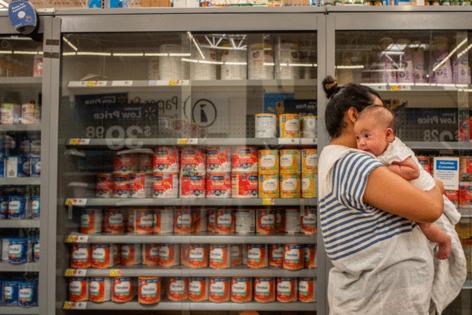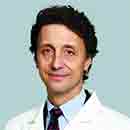Ask the Pediatrician: Is baby formula safe?
Published in Health & Fitness
Many families feed formula to their infants in the first year of life as an alternative to human breast milk. They trust that it will be safe and provide the nutrients their baby needs.
Still, you may have heard about a report that found heavy metals or other contaminants in some infant formula products. There are also new plans at the federal level to review infant formula ingredients and nutrition.
Here's what parents need to know about contaminants, ingredients and rules to keep infant formula safe.
Recently, infant formula samples from well-known companies, store brands, startups and imported brands were tested for contaminants. The samples were tested for lead, mercury, arsenic, cadmium, acrylamide, aluminum, bisphenol A (BPA), and "forever chemicals" (also called "PFAS"). Heavy metals or contaminants were found in 20 out of 41 of the powdered infant formula samples. Fortunately, in the majority of the products tested, the levels remain within safe thresholds.
Heavy metals are found naturally on Earth. Metals and other contaminants are also released as pollution and get into the water and soil used to grow food.
Heavy metals and contaminants are found at some level in nearly all foods. This includes infant formula, baby food and even breast milk.
Exposure to heavy metals and other contaminants from food and in our homes can add up. High amounts can harm a child's developing brain. The goal is to keep the level of exposure as low as possible.
The American Academy of Pediatrics supports testing for heavy metals to make sure contaminant levels are as low as possible. They also support steps to keep formula as safe, nutritious and affordable as possible.
The U.S. Food and Drug Administration requires infant formula sold in the United States contain 30 nutrients that growing babies need. It sets minimum amounts for all 30 nutrients and maximum limits for 10 of them.
A lot of research has gone into the balance of nutritional ingredients and other steps to make all types of infant formula safe and healthy. All infant formula, including imported formula sold in the U.S., must meet these rules to keep formula safe and nutritious.
Formula ingredients must provide the same essential nutrients as breast milk. Having the right amount of these nutrients is important. This includes nutrients we all need to thrive such as fats, carbohydrates and proteins.
Fat makes up about half of the calories in formula — just like breast milk. Usually, formula contains a blend of oils that provides the right amount of fatty acids. Common ingredients include soy oil, sunflower oil, safflower oil, high-oleic safflower or sunflower oils, palm olein oil and coconut oil. These oils are easily digested by your baby and mimic the fat profile of breast milk as closely as possible.
Carbohydrates in formula provide about 35% to 40% of calories. Common ingredients include lactose to support normal, beneficial bacterial flora in the gut, sucrose, modified starch, maltodextrins, and corn syrup solids, which are different from high-fructose corn syrup.
Protein makes up about 7% to 12% of the calories in formula. Common protein sources used in baby formula include ingredients from cow, soy and goat milk.
Vitamins and minerals in formula include vitamin A, B12, C, D, E, K, thiamin, riboflavin, pyridoxine, niacin, folic acid, pantothenate, biotin, choline, inositol (sometimes called "B8"), calcium, phosphorous, magnesium, iron, zinc, manganese, copper, iodine, selenium, sodium, potassium and chloride.
Other ingredients are not required but may be added. Examples include rice starch as a thickener for reflux, soy fiber for digestion and probiotics to address colic symptoms.
There are also ingredients in baby formula to help prevent spoilage. Ready-to-feed and concentrated liquid formulas often contain ingredients such as lecithin, carrageenan, and mono- and diglycerides to prevent the formula from separating during shelf-life, for example. And there are rules about packaging and storage to keep formula fresh until it is time to feed your baby.
Even with these steps, it's a good idea to check the expiration date and not use formula that has expired.
Infant formula has been a healthy source of nutrition for millions of infants. For years, pediatricians, the government and manufacturers have worked to make sure that formula provides the best nutritional value, is safe and is affordable for all babies.
If you have questions about your baby's formula or want to know how to minimize any possible risks, talk with your pediatrician.
____
Mark Corkins, MD, FAAP, serves as Chair of the American Academy of Pediatrics Committee on Nutrition. He is Division Chief of Pediatric Gastroenterology and Professor of Pediatrics at the University of Tennessee Health Science Center and Le Bonheur Children's, Memphis and the St. Jude Endowed Chair of Excellence in Pediatric Gastroenterology. Dr. Corkins is a Fellow of the American Gastroenterological Association, North American Society for Pediatric Gastroenterology, Hepatology and Nutrition, and the American Society for Parenteral and Enteral Nutrition and honorary member of the Academy of Nutrition and Dietetics. Dr. Corkins has served on the American Society of Parenteral and Enteral Nutrition (ASPEN) Board of Directors.
©2025 Tribune Content Agency, LLC.










Comments